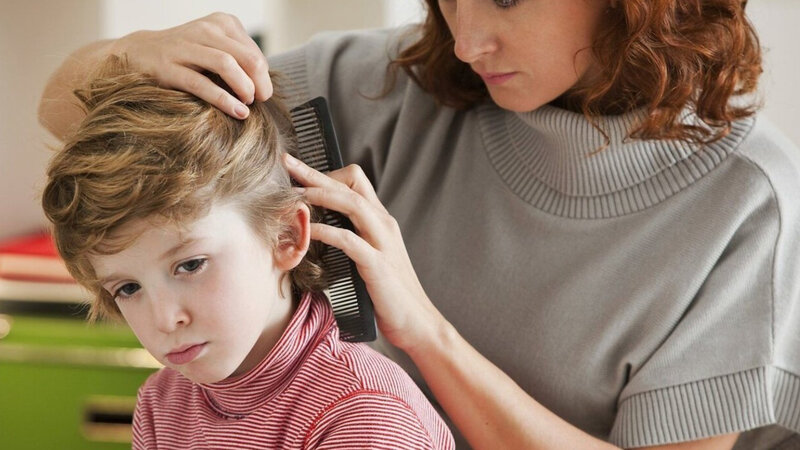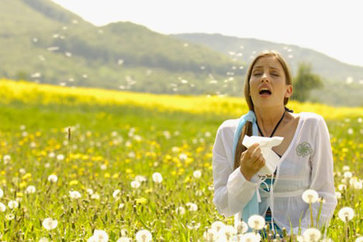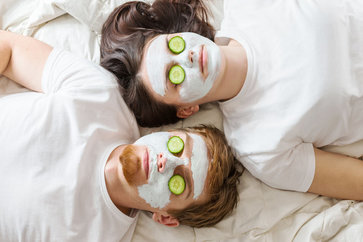Ayurvedic Home Remedies For Head Lice In Hair
What are lice? Lice are incredibly small parasites that are difficult to see with the naked eye. Each individual louse, which is the name for a single lice, is gray and brown and about the size of a sesame seed. Lice are classified as parasites because they depend on other living organisms for survival.
In order to survive, lice need to be in close proximity to the skin, and the warmth of human skin provides an ideal environment for them. They feed on small amounts of blood, although much less than a mosquito does, and they use their sticky little feet to cling onto the hair. Once lice take up residence in the hair, they also begin to lay eggs, which are called nits.
Lice can survive for up to 30 days on a person’s head and can lay up to eight eggs per day. They attach their nits to the hair shafts close to the scalp. If you notice a small oval-shaped object attached to a strand of hair, it is likely a nit.
The color of the nit can indicate its stage of development. Yellow, brown, or beige nits have not yet hatched, while white or clear ones indicate that the lice have already hatched.
Although lice do not cause disease, they can occasionally cause irritation and itching of the skin, especially at night. Excessive scratching can lead to scalp infections.
Common Types Of Head Lice
Head lice, medically known as pediculosis, are caused by infestation with one of three types of parasitic insects. These three types of lice that affect humans are:
1. Pediculus humanus capitis (head lice)
2. Pediculus humanus corporis (body lice)
3. Phthirus pubis (pubic lice or pubic lice, commonly referred to as crabs)
All three types of lice share similarities. They are approximately 2mm in size, flat, and wingless. They possess three pairs of legs located behind their heads, with sharp claws that are adapted for clinging to hair or clothing. Head lice are the largest, while crab lice are the smallest in size.
The Lifespan Of A Head Louse
The lifespan of a head louse consists of three stages:
1. Nit (Egg)
2. Nymph
3. Adult
Nits are difficult to spot and resemble dandruff. Adult females lay nits on the hair strand using a sticky substance, placing them a few millimeters away from the hair follicle. Nits take about a week to hatch into nymphs, which then mature into adult lice within seven days.
Adult head lice are approximately 2-3mm in size for males and 3-4mm for females, similar to the size of a sesame seed. They have six legs, each equipped with claws, and their color is typically a shade of grey. If the hair color is dark, the lice may appear darker.
Female head lice are responsible for infestation, as they can live for up to 30 days and lay around 8 nits per day, resulting in a total of 50 to 300 eggs during their lifetime. They survive by feeding on blood every 2 to 3 hours. Lice prefer to stay in close proximity to the scalp, as it provides them with shelter, warmth, food, and moisture.
It’s important to note that head lice do not transmit diseases and are not considered dangerous in any way.
How Head Lice Spreads?
The primary mode of head lice transmission is through close contact with an infected individual. People who come into direct contact with someone already infested with head lice are at the highest risk of acquiring them.
Additionally, head lice or body lice can sometimes be acquired through contact with infested personal items such as hats, hair combs, clothing, coats, bedding, or towels. This is the most common way body lice are spread.
Home Remedies for Head Lice
While there are several home remedies that people may try for treating head lice, it’s important to note that scientific evidence regarding their effectiveness is limited. It’s always advisable to consult a healthcare professional for proper diagnosis and guidance. However, here are a few commonly suggested home remedies:
1. Wet combing: This involves using a fine-toothed comb on wet hair to remove lice and nits. Applying conditioner can make combing easier. It needs to be done regularly for several weeks to ensure all lice and nits are removed.
2. Essential oils: Some essential oils, such as tea tree oil, eucalyptus oil, or lavender oil, are believed to have insect-repellent properties. Adding a few drops to a carrier oil (like olive oil) and applying it to the scalp may help suffocate lice. However, caution should be exercised, as essential oils can cause skin irritation or allergic reactions.
3. Mayonnaise or olive oil: Coating the hair and scalp with mayonnaise or olive oil and covering it with a shower cap overnight is thought to smother and suffocate lice. However, evidence supporting its efficacy is lacking.
4. Vinegar: Some suggest that applying vinegar to the scalp and hair can help loosen the nits, making them easier to comb out. However, it does not kill adult lice.
5. Neem oil: Neem oil, derived from the neem tree, is believed to have insecticidal properties. Applying diluted neem oil to the scalp and hair may help in getting rid of lice. However, its effectiveness has not been extensively studied.
6. Saltwater solution: Some people suggest rinsing the hair with a saltwater solution, as it is believed to dehydrate and kill lice. However, its effectiveness in completely eliminating lice is uncertain.
7. Petroleum jelly: Applying petroleum jelly (like Vaseline) to the scalp and hair and leaving it on overnight, covered with a shower cap, is thought to suffocate lice. However, this method can be messy, and it may be difficult to completely remove the jelly from the hair.
8. Herbal remedies: Certain herbal remedies, such as rosemary, thyme, or anise oil, are sometimes recommended as natural treatments for lice. However, scientific evidence supporting their effectiveness is lacking.
9. Cetaphil cleanser: This method involves applying a generous amount of Cetaphil cleanser to dry hair and thoroughly coating each strand. The hair is then blow-dried until the cleanser hardens. It is left on overnight and washed out the next morning. This suffocates the lice by forming a film around them. However, research on its effectiveness is limited.
10. Garlic: Garlic has been suggested as a natural remedy for head lice due to its potential insecticidal properties. Some people crush garlic cloves and mix them with oil to create a paste, which is applied to the scalp and left for a short period before washing it out. However, its efficacy is uncertain.
11. Salt and vinegar: A mixture of salt and vinegar is believed to help dissolve the glue-like substance that attaches nits to the hair shaft. Some people make a paste by mixing salt and vinegar and applying it to the scalp and hair for a short period. However, this method may not completely eliminate lice infestation.
12. Hot air treatment: Using a specialized device, such as a heated air appliance, to blow hot air on the hair and scalp may dehydrate and kill lice and their eggs. This method requires careful application and adherence to safety guidelines.
Note: Remember, these home remedies may not be as effective as medically approved treatments, such as over-the-counter lice shampoos or prescription medications. It’s crucial to follow the instructions provided by healthcare professionals and to thoroughly clean and vacuum the infested person’s environment to prevent re-infestation.
Frequently Asked Questions (FAQs)
Here are some frequently asked questions (FAQs) about head lice:
1. What are the common symptoms of head lice?
- Common symptoms include persistent itching of the scalp, the sensation of something moving in the hair, visible lice or nits (eggs) on the scalp or hair, and small red bumps or sores on the scalp or neck.
2. How do head lice spread?
- Head lice can spread through direct head-to-head contact with an infected person. They can also be transmitted by sharing personal items such as hats, combs, brushes, towels, or bedding.
3. Can pets, such as dogs or cats, get head lice?
- No, head lice are species-specific and primarily affect humans. They do not infest pets.
4. Are head lice a sign of poor hygiene?
- No, head lice can affect anyone regardless of their hygiene practices. Lice infestations are not related to cleanliness and can occur in clean environments as well.
5. How can I get rid of head lice?
- Treatment typically involves using over-the-counter or prescription lice treatments that contain insecticides or other active ingredients to kill the lice. It’s important to follow the instructions carefully and use a fine-toothed comb to remove nits from the hair.
6. How can I prevent head lice infestations?
- To help prevent head lice, avoid direct head-to-head contact with infested individuals, especially in crowded places. Avoid sharing personal items that come into contact with the hair, such as combs, brushes, hats, and towels. It may also help to tie long hair back and educate children about the importance of not sharing headgear or other items.
7. Can head lice survive off the scalp?
- Head lice require blood meals to survive, and they typically stay close to the scalp for warmth, shelter, and a source of food. They do not survive for more than 1-2 days away from the human scalp.
Remember, if you suspect a head lice infestation, it’s best to consult with a healthcare professional for proper diagnosis and guidance on treatment options.
Resources
- https://www.cdc.gov/parasites/lice/head/gen_info/faqs.html
- https://www.cdc.gov/parasites/lice/index.html
- https://kidshealth.org/en/parents/head-lice.html
- https://www.webmd.com/children/ss/slideshow-lice-overview


























